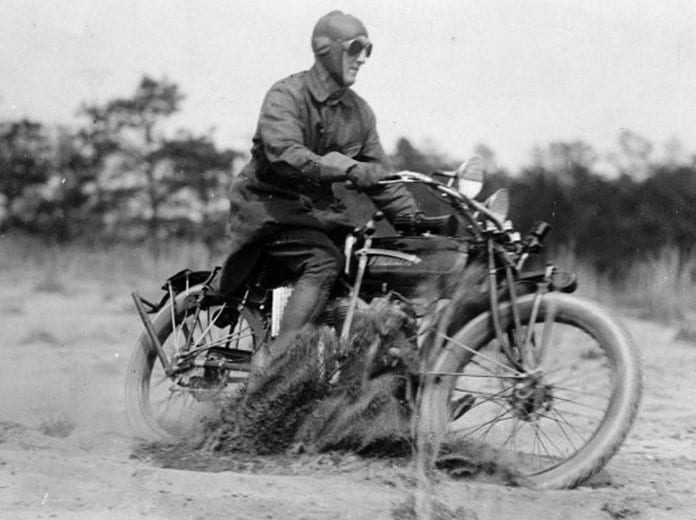Sixty years after his death and nearly a century since his headline-grabbing exploits on two wheels and four, “Cannonball” Baker remains an iconic figure in motorsports and American culture.
Memorialized in movies, on TV and in books, the name Baker is synonymous with thrills, speed and daring adventure.
He possessed a celebrity that transcended his field of endeavor and was so renowned that President Herbert Hoover once joked, “More people know Cannonball’s name than mine.”
It is ironic Baker became a prominent symbol of the remarkable era that ushered in the machine age because Erwin George Baker was born in a log cabin near Lawrenceburg, Ind., on March 12, 1882.
He grew up a lanky, gangly kid but possessednatural athleticism. After moving to Indianapolis when he was 12, Baker was a wrestler, boxer and gymnast during high school.
His gymnastic skills proved so good that he joined a celebrated acrobatic team and crisscrossed the country on the vaudeville circuit. His bent as a showman took a different turn when he traded the theater stage boards for the board track velodromes as a bicycle racer.
Baker quickly succeeded in the incredibly popular sport and his fascination with speed on two wheels led him to early motorcycle racing. Baker bought his first motorcycle, an Indian, in 1908 and competed on tracks throughout the Midwest. He won his first race on July 4, 1908, in Crawfordsville, Ind. In a year, he was ready for a national event.
It proved a historic one.
A new, 2.5-mile track opened on the west side of Indianapolis’s and its developer, Carl Fisher, christened the new course with a series of Federation of American Motorcyclists races. On Aug. 14, 1909, fighting a treacherous, oil-treated, ground-limestone surface, Baker won the first event run at Indianapolis Motor Speedway.
After that significant win, rather than continuing with conventional track racing, Baker shifted his focus. The president of Indian Motorcycles, George Hendee, approached him about promoting the brand and Baker embarked on a series of attention-gathering stunts on behalf of Indian.
He raced passenger trains from city to city and made long-distance and cross-country speed attempts at a time when roads were merely deeply rutted, rock-strewn, mud-infused paths. He even took his exploits international.
In 1912, Hendee funded a run dubbed the “South American Tour,” and Baker raced through Jamaica, Panama and Cuba. He racked up in excess of 14,000 miles and crowds gathered to catch a glimpse of the “Crazy Yankee” as he thundered through villages and hamlets.
After one record-setting transcontinental run in 1914, a New York newspaper writer compared him to the Cannonball Express train, labeling Baker with the moniker he bore the remainder of his life. Baker liked it so much he trademarked it.
Baker carved out an unprecedented place in motorsports history when he became the first and only person to race at Indianapolis on a motorcycle and in a car.
His lone Indianapolis 500 appearance came at the urging of Henry Ford in 1922. Driving a Ford-Frontenac, Baker completed all 500 miles and finished 11th.
Like he did on motorcycles, Baker racked up an astounding number of cross-country runs in cars, as a variety of manufacturers clamored for the famous “Cannonball” to prove the durability and speed of their machines. Between his passenger car and motorcycle runs, Baker established 143 transcontinental records, encompassing 5.5 million miles.
In 1933, he drove a Graham-Paige across the U.S. in a record-setting 53.5 hours. The media dubbed it the “Cannonball Run.” Forty years later, journalist Brock Yates conceived a revival, an outlaw race called The Sea to Shining Sea Cannonball Run.
During the 1972 version, Dan Gurney, driving a Ferrari Daytona, made the trip in 35 hours and 54 minutes. Considering Baker established his record before interstates and with only a few paved roads, his time remains impressive even by today’s standards.
Baker’s fame as an automobile record-setter led to him being named NASCAR’s first national commissioner in 1948. He remained a prominent representative for performance automotive events and organizations until his death on May 10, 1960.
